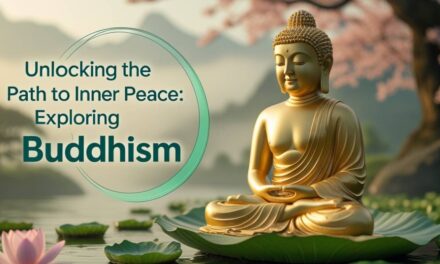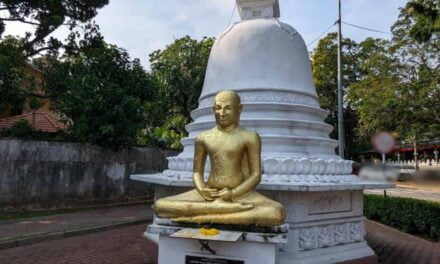Understanding Kinhin
Kinhin, translated as “walking meditation,” is a fundamental practice in Zen Buddhism. Often practiced in conjunction with zazen (sitting meditation), kinhin offers a dynamic approach to cultivating mindfulness. It involves walking slowly and deliberately, paying full attention to the physical sensations and the present moment.
The Benefits of Kinhin
Kinhin offers a multitude of benefits for both body and mind.
- Mindfulness Cultivation: By focusing on the sensations of each step, you cultivate present-moment awareness and reduce mental chatter.
- Body Awareness: Kinhin helps you connect with your body, improving posture, balance, and overall well-being.
- Stress Reduction: The rhythmic nature of walking combined with mindfulness can alleviate stress and anxiety.
- Insight and Clarity: As your mind calms, deeper insights and clarity may emerge.
How to Practice Kinhin
While kinhin can be practiced anywhere, traditional settings involve walking in a straight line, often indoors. Here’s a basic guide:
- Find a Quiet Space: Choose a calm environment where you won’t be disturbed.
- Adopt a Relaxed Posture: Stand with your feet shoulder-width apart, knees slightly bent.
- Focus on Your Breath: Take slow, deep breaths as you prepare to walk.
- Begin Walking: Take deliberate steps, paying attention to the sensations of your feet touching the ground.
- Maintain Awareness: Continue to focus on your breath and the physical sensations of walking.
- Mindful Turning: When you reach the end of the path, turn slowly and mindfully.
Incorporating Kinhin into Daily Life
Kinhin, while traditionally practiced in a formal Zen setting, is a practice that can be seamlessly integrated into the rhythm of modern life. Its versatility allows for adaptation to various environments and circumstances.
Mindful Walks in Nature: Nature provides an ideal backdrop for kinhin. The changing scenery, the sounds of birds, and the feel of the wind can deepen the meditative experience. By focusing on the sensations of each step, the sights, and sounds around you, you create a rich tapestry of mindfulness. This practice not only cultivates inner peace but also fosters a deeper connection with the natural world.
Office Breaks: The often-stressful office environment can benefit immensely from short periods of kinhin. Taking a few minutes to walk mindfully around the office can help clear the mind, reduce fatigue, and improve focus. By treating each step as a meditation object, you can transform a mundane activity into a moment of mindfulness.
Waiting Areas: Whether you’re waiting for a bus, a doctor’s appointment, or a friend, these waiting periods can be transformed into opportunities for practice. Instead of succumbing to restlessness or boredom, use the time to engage in kinhin. Focus on the sensations of standing, the rhythm of your breath, and the environment around you. This practice can cultivate patience and inner peace.
Mindful Walking at Home: Your home can also be a sanctuary for kinhin. Walking mindfully through your house, focusing on the textures of the floor, the sounds of your footsteps, and the objects in your surroundings can create a sense of groundedness and presence. This practice can be particularly beneficial before bedtime to promote relaxation and restful sleep.
The Psychological Benefits of Kinhin
Kinhin, or walking meditation, offers a unique approach to mental well-being. Beyond the physical act of walking, it engages the mind in a way that promotes psychological balance and resilience.
Mindfulness and Presence
At the core of kinhin is the cultivation of mindfulness. By focusing on the sensations of each step, the breath, and the present moment, practitioners develop a heightened awareness of their thoughts and emotions. This heightened mindfulness can lead to:
- Reduced stress and anxiety: As the mind is anchored in the present, it is less likely to dwell on past regrets or future worries.
- Improved emotional regulation: Kinhin can help individuals identify and manage their emotions more effectively.
- Enhanced self-awareness: Regular practice can lead to a deeper understanding of one’s thoughts, feelings, and behaviors.
Body-Mind Connection
Kinhin fosters a strong connection between the mind and body. This integration can:
- Reduce physical tension: As the body moves with intention, it can release physical tension and improve posture.
- Improve focus and concentration: The rhythmic nature of walking can help to clear the mind and enhance mental clarity.
- Boost energy levels: Regular practice can increase vitality and reduce fatigue.
Cognitive Benefits
Kinhin can also have positive effects on cognitive function. Studies have shown that mindfulness practices, including walking meditation, can:
- Improve memory: Regular practice can enhance cognitive flexibility and memory recall.
- Enhance creativity: By allowing the mind to wander freely while maintaining focus, kinhin can stimulate creative thinking.
- Increase problem-solving abilities: A clear and focused mind is better equipped to tackle challenges and find solutions.
By incorporating kinhin into daily life, individuals can reap the rewards of a calmer, clearer, and more resilient mind. It is a practice that invites exploration and offers a pathway to greater well-being.
Remember, the essence of kinhin lies in the quality of attention, not the length or location of the walk. Even short periods of mindful walking can yield significant benefits. By incorporating kinhin into your daily routine, you’re not just practicing a meditation technique but cultivating a mindful lifestyle.





